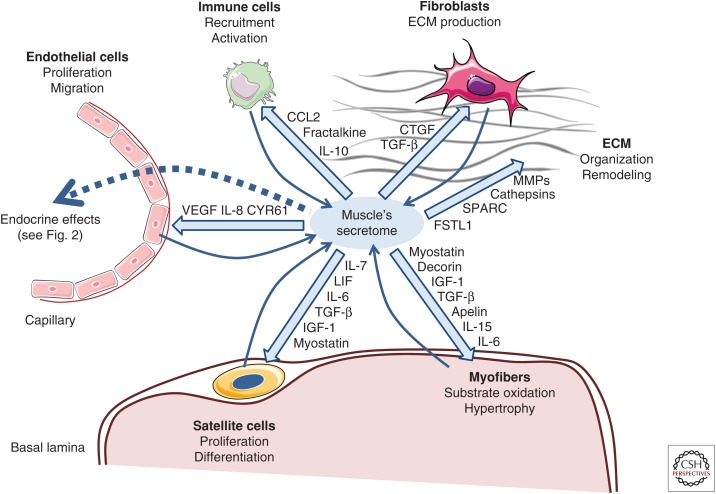Figure 1.
Autocrine and paracrine effects of exercise-regulated human myokines. Myofibers, satellite cells, fibroblasts, immune cells, and endothelial cells contribute to the secretome of muscle, which also includes proteins of the extracellular matrix (ECM). Shown are the autocrine and paracrine functions of exercise- or training-regulated human myokines on the different cell types and structures within muscle tissue. The effect of myokines can be both stimulatory or inhibitory. CCL2, CC-chemokine ligand 2; CTGF, connective tissue growth factor; TGF-β, transforming growth factor β; IL, interleukin; MMPs, matrix metalloproteinases; VEGF, vascular endothelial growth factor; SPARC, secreted protein rich in cysteine; FSTL1, follistatin-like 1; LIF, leukemia inhibitory factor; IGF-1, insulin-like growth factor 1. (Figure created using illustrations provided by Servier Medical Art.)

